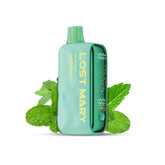Is Vaping Safer Than Smoking? A Complete Guide!
A big question keeps popping up: Is vaping safer than smoking? This debate has grabbed the attention of researchers, smokers, and even government officials.
With vapes becoming so popular, a lot of people are looking for clear answers about how vaping compares to the known dangers of smoking regular cigarettes.
We already know that smoking cigarettes is bad for your health. It’s linked to serious problems like lung cancer, heart disease, and long-term breathing issues.

Vaping is now being offered as a new alternative. Instead of burning tobacco like cigarettes do, vaping heats a liquid to create a mist that you breathe in. But the truth is, we still don’t know much about the long-term effects of vaping.
That’s why it’s important to take a closer look at what we do know. We’ll compare smoking and vaping, see how each one affects your health, and talk about whether vaping is a safer choice for people trying to quit smoking.
Along the way, we will also mention some top-quality vape options from VapeBest, which might help people who are thinking about making the switch.
Smoking vs. Vaping: Which is the Better Option?
The distinction is strong and considerable. Smoking involves combusting a substance and inhaling fumes. Vaping, on the other hand, involves heating a mixture of nicotine, propylene glycol, vegetable glycerin, and flavorings to produce aerosol inhalation.
The absence of fire and smoke makes vaping less harmful. In 2015, Public Health England conducted a review and estimated that the harm from e-cigarettes was around 95% less than that from tobacco smoking.

That statistic has remained a cornerstone in most conversations about E-cigarettes versus cigarettes. With vaping, there is no tar, carbon monoxide, the notorious two evil substances in cigarette smoke.
This certainly reinforces the notion of vaping as a preferable alternative for those who are not ready to completely quit nicotine. Those who want to try this option can check out the UWELL Caliburn G3 Pro Vape Kit 35W at Vapebest, where a variety of e-cigarette devices are designed to administer nicotine much more gently than traditional smoking.
But vaping isn’t without its problems. There are so many different liquids, devices, and ways people use them that it’s hard to clearly understand how safe vaping is. Government groups like the FDA and Health Canada do set rules and check on safety, but vaping is still pretty new. It hasn’t been studied for as long as smoking has, so we don’t fully know what the long-term health risks might be yet.
As in the judgment and biological aspect of it, vaping is damaging, although the extent is dissimilar to that which smoking fosters. Tobacco smoke is made up of more than 7000 constituents, at least 70 of which are carcinogens, such as benzene, formaldehyde, and arsenic. Cells are hurt, inflammation is produced, and in the long term, diseases develop by combining all these factors. Vape mist (or aerosol) has fewer harmful chemicals than cigarette smoke. However, it can still contain things like nicotine, small amounts of harmful gases, and tiny traces of metals like nickel or lead, depending on the type of device and liquid being used. In general, cigarettes are undeniably deadlier based on sheer numbers of poison agents, but the effects of vaping on lungs remain to be elucidated by time and study. At present, vaping occupies a gray area, less harmful than smoking, though not a haven of safety. It was envisioned to have a great potential to get away from the clutches of smoking, but here is where something more important becomes the crux; it has to strongly imitate the effects of nicotine without introducing the user to health hazards created by cigarette smoke. Because it mimics the whole act of smoking-from the hand motions to sensations in the throat, it can quench cravings more effectively than patches or gums most of the time. This edge stems from vaping's fusion of sensory and chemical satisfaction, key for breaking smoking's hold. For those stepping into this realm, choosing the right gear is paramount. The Geek Bar Pulse X caters to novices, blending ease with adaptability to ease the leap from tobacco.
The effects of vaping on the lungs weigh heavily on smokers hoping to undo years of tobacco's ravages. Smoking scars lungs with COPD, emphysema, and cancer, fueled by tar and particulates. Vaping side steps these, offering a chance to stall further ruin. Since vaping doesn’t create tar like cigarettes do, the tiny hairs in the lungs (called cilia) can start working again, helping the lungs clean themselves better. But is vaping bad for the lungs over a long time? So far, signs show that vaping causes only mild irritation or stress compared to the serious damage caused by smoking. However, cases like the 2019 EVALI outbreak—linked to illegal THC vapes—show that using poor-quality products can be very dangerous. That’s why it’s important to buy from trusted sources like VapeBest, which offers safer, properly regulated products. A cigarette yields about 10–12 mg of nicotine, with 1–2 mg absorbed. Vaping's yield shifts with liquid strength (3 mg/mL to 50 mg/mL) and inhalation length. For smokers who are making the switch, understanding this can help them use vaping more smartly. The Flavour Beast Mode Max 18K Disposable Vape lets users adjust the nicotine level, so they can either match what they’re used to with cigarettes or slowly cut back over time.
Discussion of vaping involves a wide assortment of variables related to the safety, use, and control of the application. In this section, five significant facets are discussed as an all-encompassing way of knowing this practice, equipped with scientific evidence and practical implications. These facts draw comparisons between some nuances in vaping versus conventional smoking and highlight the necessity of making informed choices. Smoking is the most specific case of combustion by which such harmful range pollutant materials are discharged into the whole environment. Cigarette smoke, which contains at least about 7000 chemicals, includes 250 cancer-causing intrinsic components such as benzene, formaldehyde, and polycyclic aromatic hydrocarbons. Formed as tar and carbon monoxide from burning tobacco pose major health risks to lung and heart functioning. Inhaling creates an aerosol from a solution with very few combustion byproducts. Vaping is so attractive because of the overwhelming variety of flavors that include all manner of fruit mixes and dessert-like profiles. However, with that diversity comes certain considerations for the panel. Some flavoring agents, namely diacetyl, have been associated with possible respiratory issues. Diacetyl used to be an ingredient for flavoring popcorn and was related to bronchiolitis obliterans (sometimes called "popcorn lung"). Its detection in some of the e-liquids threatens the risk of inhalation. With another pertinent consideration, nicotine delivery is fine-tuning: providing a smoker with precise control over nicotine uptake. E-liquids are marketed with a variety of nicotine concentrations, usually ranging from 0 mg/mL (nicotine-free) to 50 mg/mL (high-potency nicotine salts), allowing individualized adjustment for personal needs. Quality devices use the best materials and technological knowledge to ensure that the performance of these devices remains predictable and to minimize potential side effects. At the same time, poor quality or counterfeit hardware creates real hazards. Poorly manufactured coils or tanks may leach metals, from lead or nickel to chromium, into the aerosol, especially when operated at high temperatures. E-liquids can also break down into potentially toxic byproducts, like formaldehyde, if they're overheated by faulty or misused devices. The back-and-forth around anti-vaping laws comes from changing ideas based on new research and what different societies care about most. Around the world, vaping rules can be very different. For example, in the UK, vaping is mostly accepted as a way to reduce the harm caused by smoking. But in many other countries, governments either ban vaping completely or put strong limits on things like flavors. These countries often say they are worried about young people starting to vape or about the unknown long-term health risks. The question of whether vaping is safer than smoking comes from this complicated situation. Even though vaping is better than smoking because it avoids the serious dangers caused by burning tobacco, that doesn’t mean vaping is completely safe for the lungs either. The e-cigarette vs cigarettes tally is leaning towards vaping as a lesser evil, but "Is vaping bad for lungs in the long term?" remains unanswered without more years of data on the difference. However, vape devices, liquids, and beyond, contained at VapeBest, make sure that users can rely on having everything they need to step down. Vaping wins over smoking in terms of risk, but the ultimate victory in terms of health would be a total cessation of nicotine. Until we have clear answers, the best thing we can do is follow the evidence to find the safest way forward.Cigarettes vs. Vaping- Which is More Harmful?
Can Vaping Help You Quit Smoking?

Will Switching to Vaping Heal My Lungs?
How Many Puffs of Vape Equal a Cigarette?

5 Key Facts You Should Know About Vaping
Lower Toxin Load
Flavoring Concerns
Nicotine Flexibility
Quality of the Device Matters
Fluid Regulations
Conclusion


























